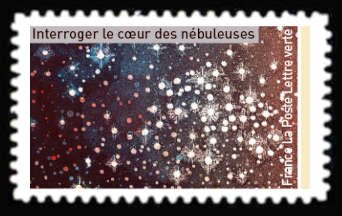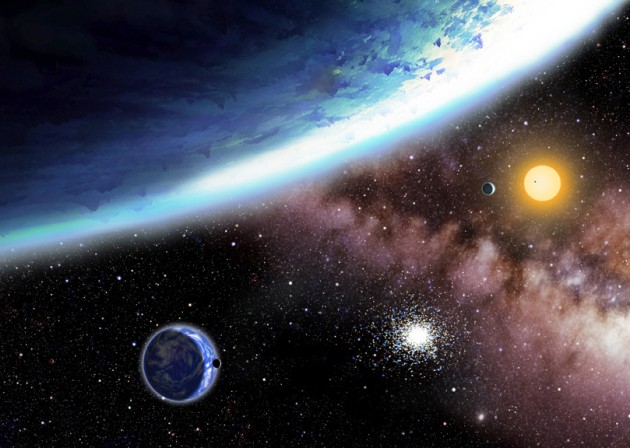Stamp: Investigating the Hearts of Nebulas (France 2021)
Investigating the Hearts of Nebulas (France 2021)
11 October (France ) within release Learning About The Stars (2021) goes into circulation Stamp Investigating the Hearts of Nebulas face value Lettre No Face Value
| Stamp Investigating the Hearts of Nebulas in catalogues | |
|---|---|
| Colnect codes: | Col: FR 2021-56e |
Stamp is horizontal format.
Stamp from booklet. Face value € 1.08 on day of issueAlso in the issue Learning About The Stars (2021):
- Stamp - Deep In Retreating Galaxies face value Lettre;
- Stamp - Every Star Has A Name face value Lettre;
- Stamp - In An Infinitely Expanding Universe face value Lettre;
- Stamp - In the Light of Distant Infinity face value Lettre;
- Stamp - Investigating the Hearts of Nebulas face value Lettre;
- Booklet - Learning About The Stars face value 12*Lettre;
- Stamp - Learning About The Stars face value Lettre;
- Stamp - Measuring the Distance that Separates Us face value Lettre;
- Stamp - Millions of Stars in Motion face value Lettre;
- Stamp - Nova, Supernova and Pulsar face value Lettre;
- Stamp - We Are Stardust face value Lettre;
- Stamp - Where Turbulent Young Stars Glow face value Lettre;
- Stamp - White Dwarf, Red Giant and Blue Giant face value Lettre;
Stamp Investigating the Hearts of Nebulas it reflects the thematic directions:
Astronomy is a natural science that studies celestial objects and the phenomena that occur in the cosmos. It uses mathematics, physics, and chemistry in order to explain their origin and their overall evolution. Objects of interest include planets, moons, stars, nebulae, galaxies, meteoroids, asteroids, and comets. Relevant phenomena include supernova explosions, gamma ray bursts, quasars, blazars, pulsars, and cosmic microwave background radiation. More generally, astronomy studies everything that originates beyond Earth's atmosphere. Cosmology is a branch of astronomy that studies the universe as a whole. .
A star is a luminous spheroid of plasma held together by self-gravity. The nearest star to Earth is the Sun. Many other stars are visible to the naked eye at night; their immense distances from Earth make them appear as fixed points of light. The most prominent stars have been categorised into constellations and asterisms, and many of the brightest stars have proper names. Astronomers have assembled star catalogues that identify the known stars and provide standardized stellar designations. The observable universe contains an estimated 1022 to 1024 stars. Only about 4,000 of these stars are visible to the naked eye—all within the Milky Way galaxy.


